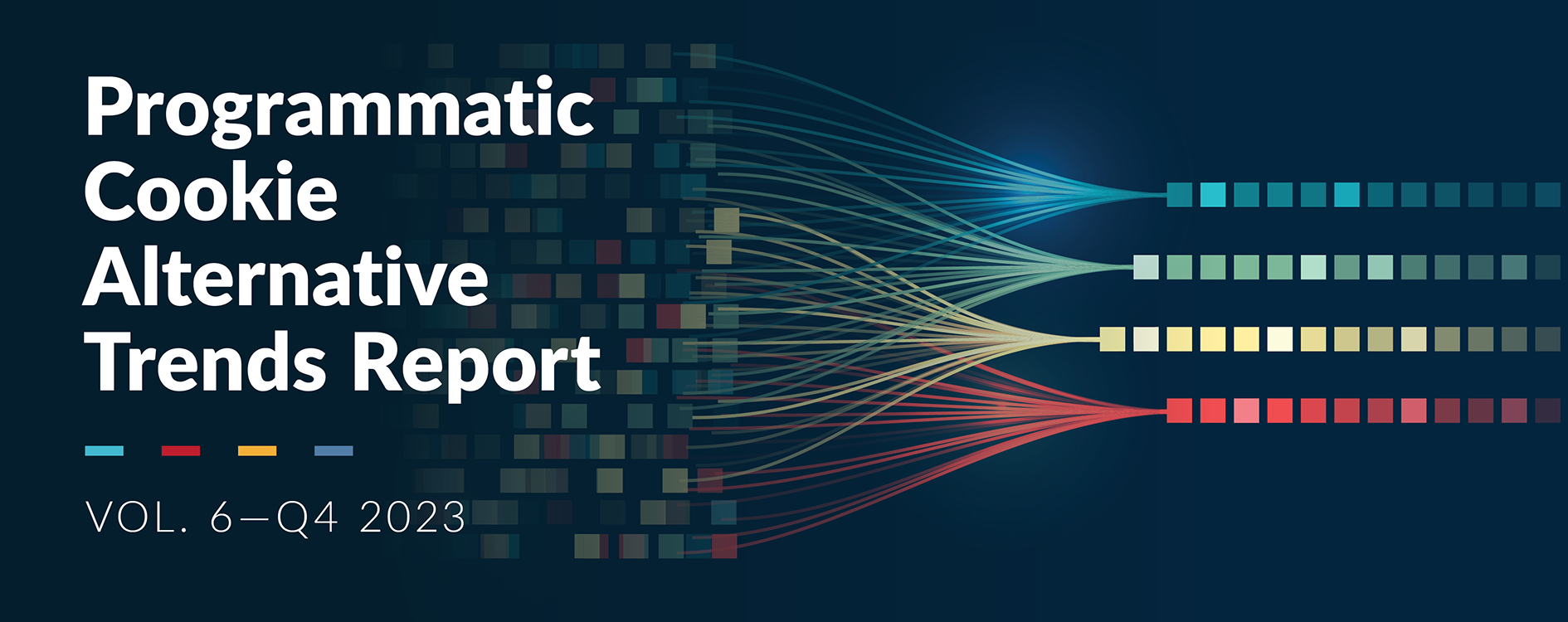For years we have known a cookieless future awaits. And yet! Few seem prepared for this inevitability.
Throughout history, there have been revolutionary changes that have remade industries and created powerhouses of those companies that took a leap to prepare for the future.
IBM, was early to identify the personal computer revolution. Netflix created the modern streaming industry while it was an extremely successful DVD supplier.
And for as many industry champions, there were those who felt it was too soon to embrace the future because their revenue was tied to historic ways of doing things.
The advertising industry isn’t immune to this kind of thinking. For years, we have known a cookieless future awaits. Google is committed to a cookieless future, despite their moving of timelines. Soon — the vaunted cookie will be no more — with a decline starting in Q1 2024.
And yet! Few seem prepared for this inevitability. Despite the necessity for the advertising industry to adapt, some organizations are not heeding these warnings. Embracing the future without third-party cookies requires experimentation today to understand exactly what awaits.
Today’s advertising environment is governed by traffic-shaping algorithms that will prioritize cookie-based traffic until they’re specifically instructed not to do so. The short-term benefits dictate this.
Publishers and SSPs are influenced by higher CPMs and fees and DSPs crave the audience targeting and segmentation provided by cookies.
On one hand, this is completely understandable. Most businesses are driven by short-term benefits. On the other hand, we’re not preparing for the storm arriving at our shores. And the storm is this: Google has remained steadfast in its complete phase-out of cookies in the latter half of 2024.
A charitable look at this current state brings to mind several fairy tales about what happens when you don’t prepare for the future ( Or maybe you remember the story of the ant and the grasshopper.)
Put simply, if we do not encourage the use of cookie alternative traffic in advertising today, the entire industry will take a huge step back when it becomes a reality.
Here’s the important thing: done right, organizations that embrace cookieless traffic today will gain an important competitive advantage today and tomorrow.
5 Justifications for Bending the Ad-shaping Algorithm
Here are five justifications for bending the ad-shaping algorithm
Reduced dependency: You can either begin tapering off third-party cookies now or have a very painful detox later. Reducing your reliance on third-party cookies for ad targeting will make future campaigns more successful.
Create a clean, open environment to succeed: Almost all of today’s traffic shaping and supply path optimization was built for a user-commoditized internet where you could target and measure the same user across multiple paths. When addressability is at a premium, an unthrottled, mult-hop connection may be required to reach addressable scale. Yesterday’s tactics were built for a different battle.
Zig where others zag: With fewer bids for this traffic and therefore less competition, advertisers will yield higher win rates. Likewise, suppliers that focus on this will earn revenue on inventory that’s typically ignored.
Capitalize on underserved Safari users: As Salon CRO Justin Wohl pointed out at a Digiday Summit, Safari users are a very desirable audience that advertisers discount because it doesn’t allow cookies. He called them among the “highest-value opportunities,” but yet the publisher sees half the yield of cookied traffic. This ideal audience is just not seeing as many ads, giving advertisers more opportunities to reach them and lessening the likelihood of ad fatigue.
Begin addressing what will work best for your audience: When cookies disappear, organizations will have several options for how they try to replicate what cookies provided (spoiler alert: no one will be able to replicate it exactly). Options include relying on first-party data,clean rooms, universal identifiers, contextual targeting, and other methodologies. Trial and testing each right now will help your organization understand what will be successful for them. That way, you’re ready to lean into one or two strategies that are most effective when your advertising depends on it.
Focus on Cookieless Traffic, Today
Ignoring cookieless traffic at this stage is a critical error because of the reasons described above. Safari and Firefox took the first step and Google will soon join them.
Acknowledging a future driven by cookieless traffic and taking decisive action is necessary to stay in line with the competition.
By reducing dependency on third-party cookies, organizations can future-proof their campaigns while standing out in a less crowded market, as few competitors focus on cookieless traffic, leading to higher win rates for advertisers.
Organizations must recognize the evolving landscape, adapt their strategies, and test alternative approaches to secure a competitive advantage against companies that will ride the cookie train until the last moment.
This original article was originally featured on AdMonsters.
By: Paul Bell | President at 33Across








